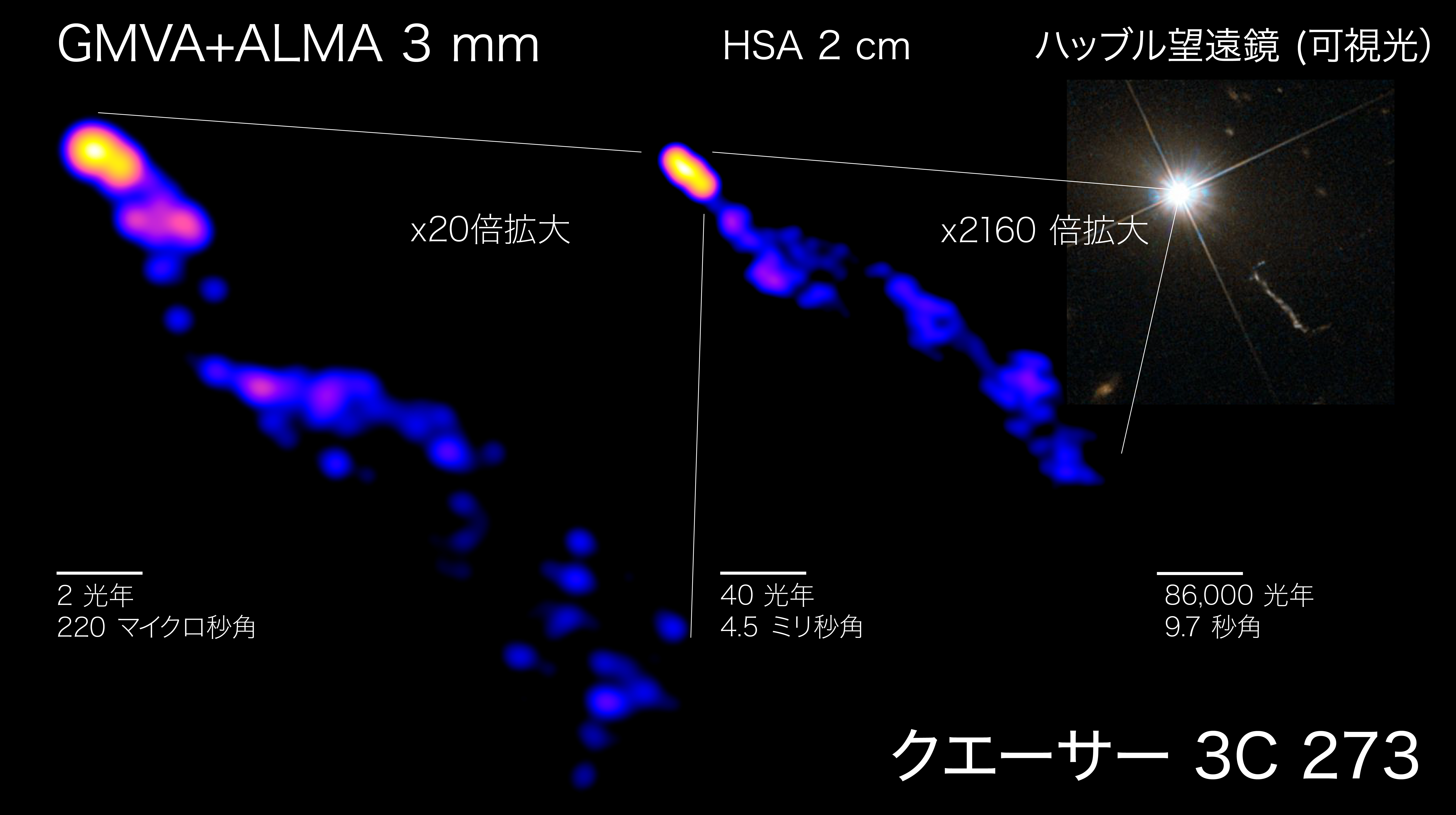Disclaimer: machine translated by DeepL which may contain errors.
Black hole jet seen through a million eyes
Hiroki Okino (Department of Astronomy, 3rd Year Doctoral Student )
Kiki Homma (Professor, Mizusawa VLBI Observatory, National Astronomical Observatory of Japan / Adjunct Professor, Department of Astronomy )

![]()
It is known that there exists a massive black hole at the center of a galaxy with a mass more than one million times the mass of the Sun. Some of the gas (plasma) accreting onto this central black hole is blown outward through interaction with the magnetic field surrounding the black hole, and is observed as a high-speed plasma flow "jet" ejected from the black hole. The jet reaches the far outer reaches of the galaxy as it is narrowed and squeezed from near the jet opening, affecting the evolution of the galaxy and the surrounding cosmic environment. However, it is still unclear how the jets are narrowed down.
To solve this mystery, we focused on the extremely bright quasar 3C273. 3C273 is known as the first quasar discovered by humans in the 1960s, and is characterized by a long jet extending from its bright central core. 3C273 is the first quasar discovered by mankind in the 1960s. Since 3C273 is located relatively close to us, its jet has been an excellent target for observation and has been actively studied by many researchers for several decades since its discovery.
In this study, we observed the 3C273 jet using a technique called "ultra-long baseline radio interferometry," in which geographically distant radio telescopes are used to simultaneously observe the jet in detail and comprehensively from the root to the tip of the jet. One of the strengths of this technique is its extremely high resolution, which cannot be achieved by other methods. In fact, the highest resolution achieved in this study is about 60 microsecond angles, which corresponds to about 1 million in terms of visual acuity. We have conducted observations using the international radio observation network consisting of the ALMA radio telescopes in Europe, the United States, and Chile in South America, and have carefully analyzed the data with the cooperation of researchers from around the world. Furthermore, by applying the latest imaging techniques to the data obtained from the observations, we were able to obtain reliable images of the jet from the observation data. The analysis of the images obtained in this way revealed that the narrowing of the jet in 3C273 extends far enough beyond the gravity-dominated region of the central black hole. This study is the first to observe the jet of a quasar with the highest precision down to its root, and to show clearly how the jet is squeezed. Although the jet squeeze itself has been observed in fainter and less active objects, we have obtained strong evidence that the squeeze is universal in black hole jets of various species. We intend to continue our research by increasing the number of objects in order to obtain a deeper understanding of jets, including their diversity.
The results of this study were published in H. Okino et al. The Astrophysical Journal 940, 65 (2022).
(Press release November 22, 2022)
Published in Faculty of Science News, March 2023
Communicating to Faculty Research Students >



